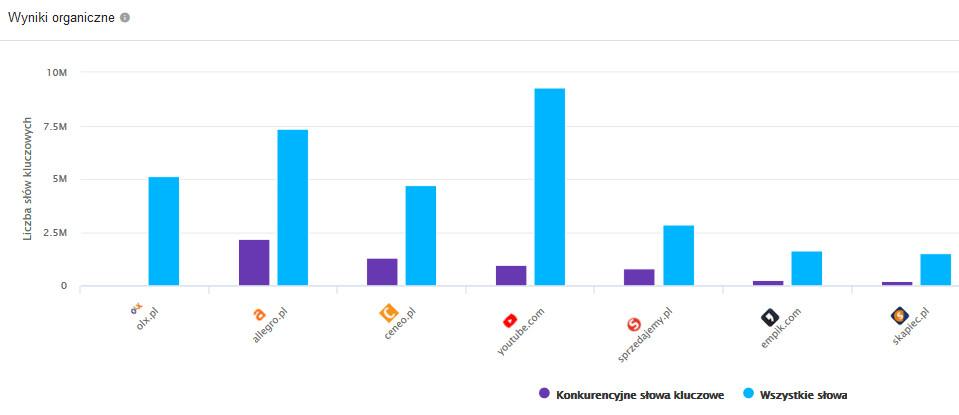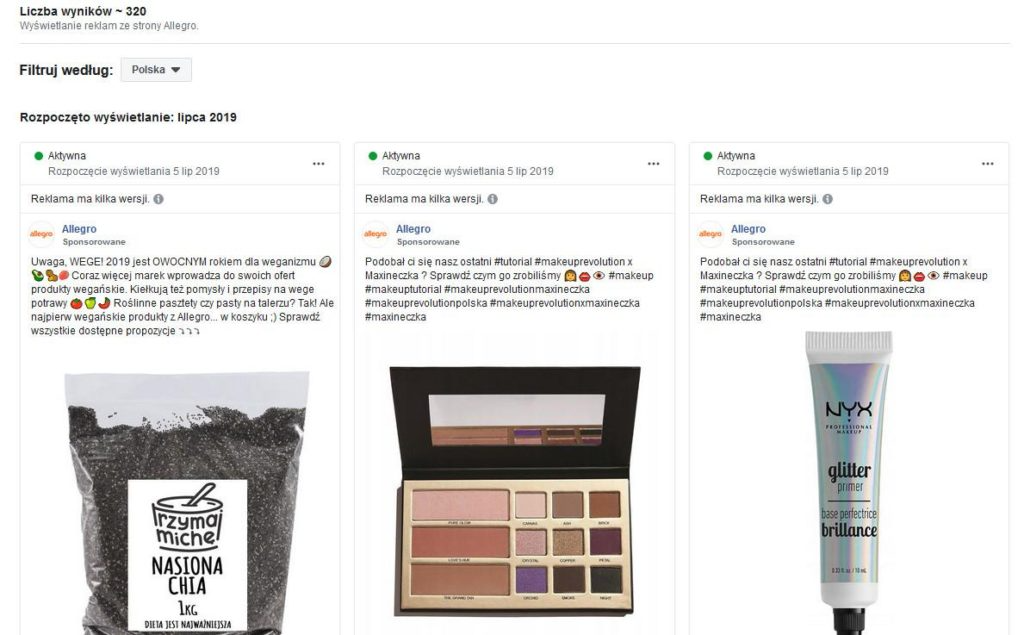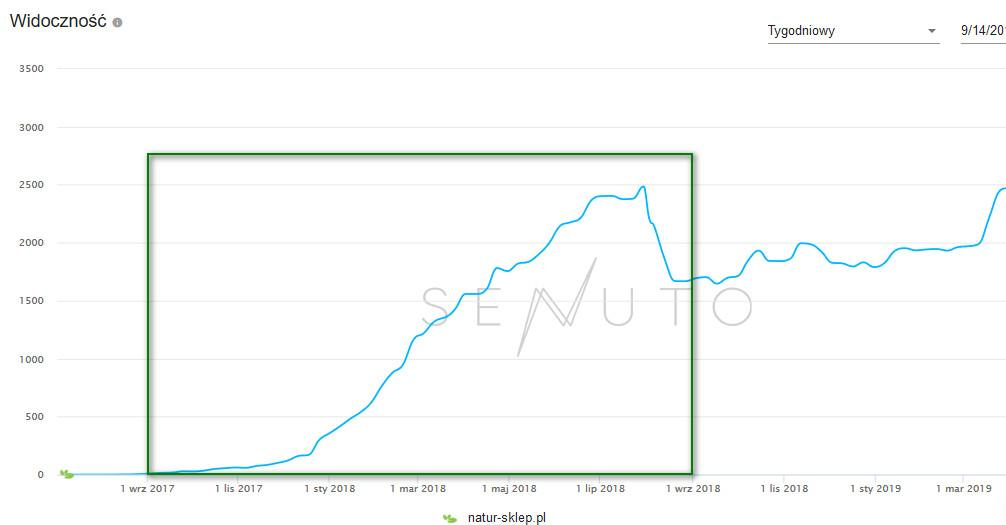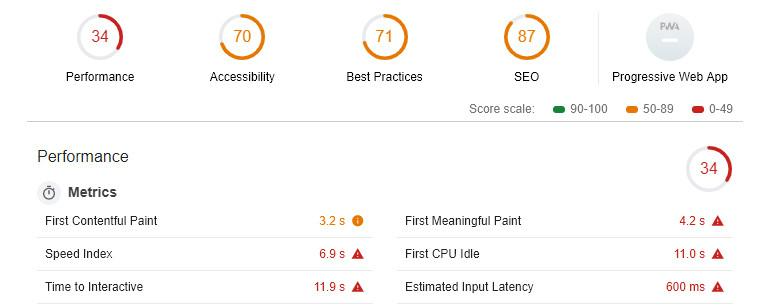A new business often has an uphill battle. Lack of a recognizable brand, fledgling sales, limited budgets for store promotion, high ongoing business costs and much more. To begin with, we need to invest, waiting for sales to finally start growing. You need to increase traffic as soon as possible so that sales will increase along with it. Then you will be able to spend more on promoting your store, expand your stocking or invest in additional content.
. .The reality, however, is not so simple. If you decide to run an eCommerce store, know that the competition is numerous! Last year, there were a record over 30,000 online stores registered in Poland! What to pay attention to in the first year of an eCommerce store to increase the chances of survival and further development?
. .Costly lack of knowledge
.It’s possible to spend a small budget wisely and build sales, or it’s easy to spend a large budget and gain virtually nothing. How do you guard against avoidable mistakes?”
. .
Start by asking yourself some key questions:
. .- What marketing channels will the budget be invested in? .
With the help of which channels is there a chance to build sales? What channels are your competitors using? The answers to these questions will help you lay out your marketing plan and allocate your budget to the various channels.
.- How much will it cost to promote the store per month, and how much in the entire first year? .
You should have these funds secured at the start of your store. It will take some time before sales develop, meanwhile you need to invest in promotion from the beginning. Knowing the estimated costs of marketing in the first year will let you know if you have secured the right amount.
.- How does my offering compare to the competition?
competitor analysis is very important. Many people, when looking for a particular product, check out a few dozen listings. If most of your competitors, compared to your store, have more elaborate product photos, better descriptions, encourage promotions or free shipping, your sales may be affected. It also works the other way – when you analyze your competitors, you may find things they are the ones doing wrong, so you learn from others’ mistakes. Conduct a competitive analysis on Google with Senuto >
. . .- What can I do myself, and what should I seek help with?
Positioning, content writing, running ad campaigns and social media accounts, and more – in short, there’s plenty to do in marketing an eCommerce store. Outsourcing everything will put a heavy strain on the budget. A good way out is to figure out where such help is really needed, and what you are able to do yourself. Even with a small budget, putting in your own work, you can catch up with the competition, which invests much more (example – your competitors invest in content 2000zł per month, and you write it yourself).
. . .On what to outsource and what to do yourself in SEO, read HERE.
. .- Do I have knowledge about promoting my store online? .
You must have knowledge of where the traffic is coming from, what are the ways to attract it and how to build sales online. An agency or specialist can help in some areas, but they will only take responsibility for their department (such as SEO or advertising). You are the one who chooses the store’s software, specialists or agencies to work with to promote it, verify the work, have a budget, and make strategic decisions. So you need to arm yourself with knowledge!
.Before you drive the first shovel, that is, before you commission an online store, invest in your own education. There is a wide range of on-site and online training courses on the market. Training courses on store development and sales are available, and there are some dedicated to specific areas of marketing like the basics of SEO or advertising. They are often aimed at business owners.
.Such training courses obviously involve more or less cost, and on top of that you have to spend time on them. However, look at the bigger picture! The cost of creating an eCommerce store plus the annual cost of promotional expenses together add up to tens of thousands of zlotys. Thanks to the training, you will know:
.- what you need from your store software (you will avoid costly redesigns or even putting up a store from scratch) .
- who you should work with (you will avoid unreliable professionals who will waste your valuable time in that first year) .
- you will make better decisions related to promoting your store and investing your budget) .
The cost of training will pay for itself many times over.
. . .Find out about SEO in eCommerce on our blog in the eCommerce category, which we are constantly expanding.
.Selling with the help of external services
.Marketing an eCommerce store takes time. Meanwhile, you can generate sales with the help of third-party services. These include price comparison sites like Ceneo, auction portals like Allegro or typical classifieds sites like OLX. This is one of the easier and faster methods to kickstart sales.
. .Look at the visibility comparison with Senuto for the largest sites:
.
Many of them appear in search results for millions of queries – there’s a good chance they also appear for queries related to your niche.
.Will selling with their help pay off for your e-store? This needs to be tested. I have seen different results, even in the same niche. For example, online pharmacies can’t advertise directly, so they like to use Ceneo in addition to SEO. Some of them are able to build solid sales for themselves from this channel, while others are no longer able to compete on price and selling through Ceneo does not pay off for them.
.The aforementioned external sites, with their traffic and popularity, give a concrete base to test. It usually takes a few months of testing to see what the actual cost of selling through them is, how big the sales are and whether it is profitable.
.The most common mistake in the first year
.The most common mistake made in the first year of running an eCommerce store is setting the whole strategy based only on SEO or making SEO the black horse, thus pushing other activities further down the road.
.Of course, SEO for eCommerce store is important. If you can develop a long tail, there is a chance to bring in sometimes really significant traffic (the potential depends on the niche in question). Only for this it takes time, usually more than a year. So you need to be patient.
. .Betting that you will be able to develop enough organic traffic in the first year to generate enough sales is risky. Sometimes great results will appear, but there are also situations when everything is delayed. You have to reckon with the fact that competitors are numerous and usually also conduct their own marketing activities. That’s why you have to wait quite a long time for positioning results.
. . .Google also likes to put its foot up, from time to time introducing new algorithm updates. On these, in turn, someone always gains and someone loses.
. .
Long-term looking, usually well-run SEO pays off and compares favorably with ads. However, this is not a reason to focus only on it.
.Into the marketing strategy it is worth including activities that will generate sales quickly. These can include the aforementioned external sites like Allegro or Ceneo, as well as ads like product ads on Google, Facebook ads and others. This will keep your traffic diversified (your store will not depend on one channel) and gain time to work quietly on organic channel development with the help of SEO.
.Advertising – the most important in the first year
.Advertisements are crucial to a store’s success. At the end of the first year of operation, they must pay for themselves. What does that mean? You need to know how much you’re spending on ads and how much revenue and profit you’re generating with their help. Obviously, you want the sales generated by the ads to be greater than the cost of the ads, and for there to be a clear profit when summed up at the end.
.There are metrics like ROI or ROAS to help measure this. They are described in detail, so it is worth reading about them. This knowledge will come in handy, because even if the ads are run by an agency or specialist, they will use these very terms in their reports.
.If, during this time, no advertising can be found that pays and generates sales, then the store has a serious problem and no SEO will be the cure here.
. . .What’s the problem?
. .- Maybe you have chosen too difficult an industry. Pulling traffic is very expensive and with a limited budget you will generate too little of it. Forgoing ads and focusing on SEO usually won’t be a solution, because expensive ads also translate into the cost of SEO efforts.
- You’re pulling traffic, but not sales. When you run ads, you can see exactly what phrases and channels the traffic is coming from and how it translates into sales. When there is traffic but no sales, then know that there is a problem with either the ad itself or the store and product. .
Are the ads targeting the wrong products or the wrong audience? But maybe it’s the fault of the product itself – there’s no demand for it or it’s priced too high compared to the competition? Maybe the store’s UX is limping along? If it’s a fault on the part of the product or the store itself, then even if you abandon ads and focus on SEO, it’s still unlikely to translate into sales.
. .How to find keyword phrases that will translate traffic into sales
. .You need to thoroughly test a particular case to give a more concrete answer as to why the ad is not selling. As a store owner, you should strive to make advertising profitable. You can more easily plan the development of your store (you invest in campaigns that have the best rate of return) and reduce your risk by becoming independent of Google’s search engine.
. .What kind of ads are we talking about?
. .To try out here are the ads:
. .- text Google Ads, .
- product Google (Merchant Center), .
- Facebook, .
- Instagram, .
- Youtube, .
- On Allegro or Ceneo (if you sell there). .
For some, whether because of a tighter budget or simply the high cost of clicks in a particular niche, Google Ads text ads will be too expensive. Then you can check how the sales and return from the ads will be with the help of product campaign (Merchant).
.Often it is Facebook and Instagram that allow you to run cheaper advertising campaigns. However, you need to put more effort here in preparing the creative, testing different ads and audience groups before you can get satisfactory rates. It takes more time, but you can get interesting results here.
.There are many tools that allow you to track the activities of your competitors, and this is always valuable information. Ad types, advertising slogans, the form of graphic presentation… All this can be previewed. In the case of Facebook, Facebook Ad Library is helpful, and there are also external tools like BigSpy.com and many others (you need to search depending on the type of campaign you are running).
. .
The great forgotten – remarketing
. Remarketing is advertising targeted to people who have visited your site in the past. That is, they have come into contact with your brand at some point – even vaguely during a brief visit. . With remakreting, you can remind them of your store and offerings. Perhaps someone browsed through a dozen or so offers from different sites and hasn’t decided to buy yet, or added a product to their cart in your store but didn’t complete their purchase? There are many options for targeting visitors, and with them you can adjust the type of ads displayed accordingly. . As with standard advertising, there are various options to test. Usually, however, remarketing has a positive effect on store performance. Remarketing campaigns themselves are not expensive, because they target a narrow group of people who have already been to your site. . TIP: From the very beginning of your store launch, it’s a good idea to remember to install a Facebook pixel to collect the information you’ll need when launching remarketing. .SEO activities in the first year
. The scale of SEO activities in the first year is good to depend on the budget. Divide your budget between advertising and SEO, because as I mentioned above, it is worthwhile to work in both areas. Keep in mind at the same time that you will have to wait a few months for the first SEO effects, so the sooner you start working solidly on the SEO topic, the better. . If your budget is severely limited, I recommend you focus on spending it wisely on advertising, and with SEO, limit yourself to the most important basics. In the first year, it’s worth taking care of :- appropriate arrangement of website structure .
- investment in content .
- optimization of the store .
. . In building the structure of the site, the most important thing is the tree of categories and subcategories. It is important to arrange the structure in such a way that it is clear and easy to navigate, and that it contains the sub-pages needed to pull in paid and organic traffic. . Inherent in the store is the ability to filter, i.e. narrow down the list of products. This can be filtering by price, size, color, manufacturer, model, etc. (specific to the item). Filtering is often not indexed, but there are cases of stores where some filters make sense and are worth indexing (for example, by color like “red nail polish”). . It’s good if an experienced marketer, preferably an SEO specialist, helps you lay out the structure from the beginning. They will also help you check the filtering. This will help you avoid many mistakes and difficult corrections in the future. . .
Invest in content
. . Invest in content on your own or with the help of a copywriter. Content by itself is not a magic solution to achieving better rankings and increased traffic — keep in mind that many of your competitors are also investing in it. So when conducting content marketing activities, take extra care to obtain external referral links and properly promote the content. . .Store Optimization
. . Optimization is important right from the start. It’s a broad topic, but it’s mainly about two areas: .- keyword optimization (in headings, title) to be done usually from the store panel .
- optimization from the technical side (corrections in the store software), to be implemented by the programmer.
- .
Linking
. . In addition to the content and the store optimization itself,links in external sites pointing to your store are also important. For example, a nail polish store may have links from beauty blogs, portals or discussion forums aimed at women. Based on such links, Google evaluates the power and trust of the domain of your store, which has an impact when ranking search results. . In the first year, it’s definitely worthwhile to take care of the basic links that you can acquire on your own (e.g., from the websites of manufacturers you work with). Emphasize the quality of these sites. I’ve seen many cases of well laid out stores (in terms of structure, content, optimization) that had great visibility and traffic after a year with really seemingly modest linking (they gained links from 30-50 different domains in a year in total). . Take a look at the example in the screenshot. The store gained dozens of links in the first year. The emphasis was on the aforementioned optimization aspects and content. Despite not very many links, a large increase in visibility was achieved..
Sales abroad
. . Often stores have the potential to expand their sales to overseas, and they completely abandon or postpone these activities. And that’s a pity, because there are two important facilitations in this regard!- First, Poland is in the European Union, so there are several facilitations. On the formal side – there are no problems with customs clearance. On the logistical side – there are many couriers present in Poland who deliver parcels across Europe, and there is also the Polish Post Office. It is not necessary to start with shipping all over the world, you can start with the countries of the Union. .
- Secondly, the content translation process is now quick and easy. If you don’t want to invest in a translator, you can take shortcuts – for many store scripts you can find plugins or modules that create translations automatically, for example, using Google translator, which does really well. Of course, it’s a good idea to have the descriptions verified and corrected by a translator or native speaker at the end.
UX improvements
. . There are many ways to discourage a visitor from buying from a store. These include a complicated shopping path, low-quality product images, poor product descriptions, unclear structure and navigation, long loading times, an underdeveloped mobile version and more. . Ordering a UX audit of a website is therefore a good investment that will help eliminate many problems early on in the store’s existence. Should you invest in such an audit already in the first year of eCommerce operations? Definitely! . A UX audit is worth supplementing by checking the store’s pages with Google Lighthouse for mobile and desktop devices. This is a tool to check not only page load time, but also other areas like accessibility, UX and best practices. There are usually technical elements to improve and their implementation requires the help of a programmer. However, it is worth implementing improvements to the site according to these guidelines, as this improves both the usability of the site, as well as improves SEO results (there are case studies showing that simply refining the comments from Lighthouse strongly improved the visibility of the site in organic results). . .
 Szymon Spychała
Szymon Spychała